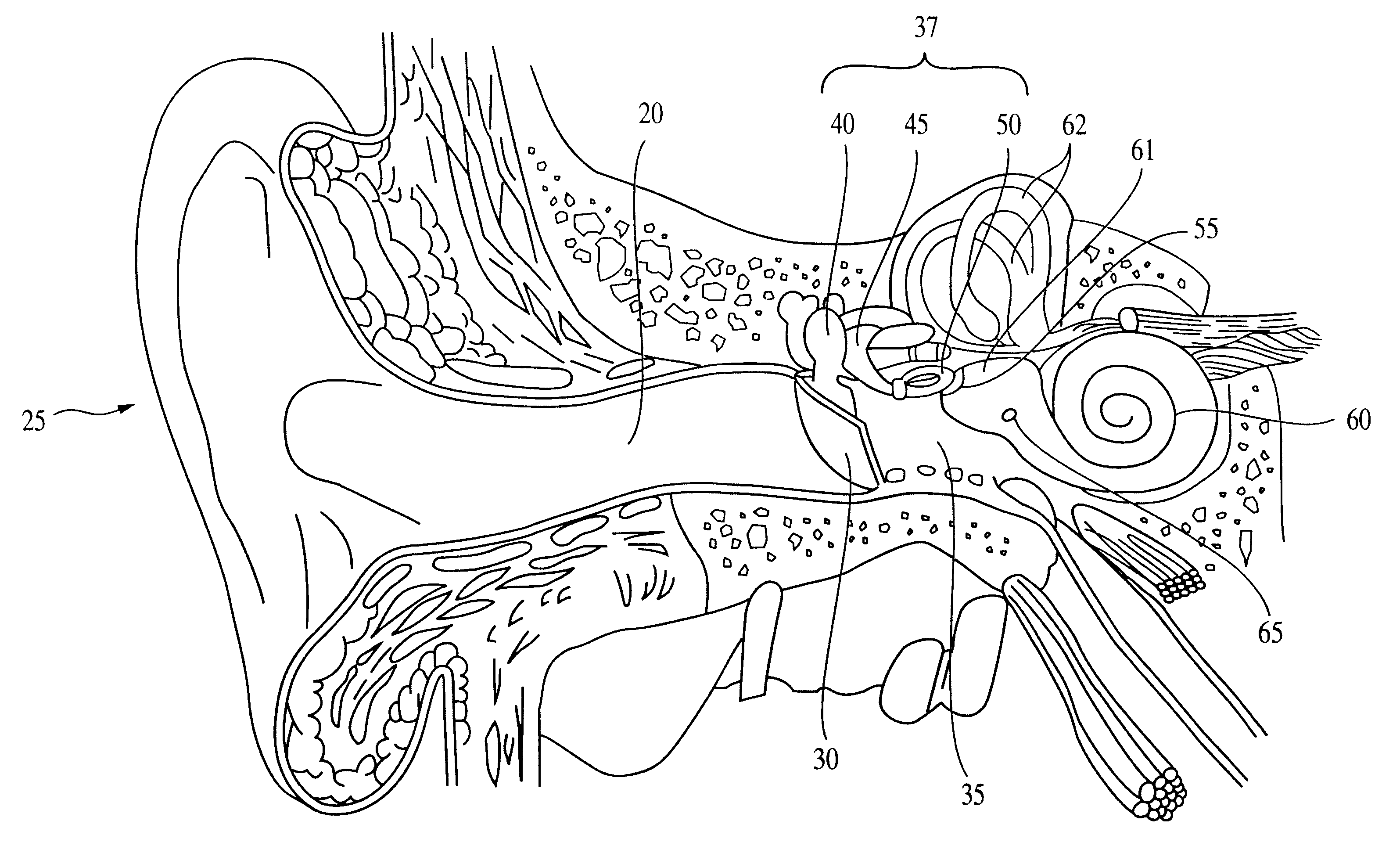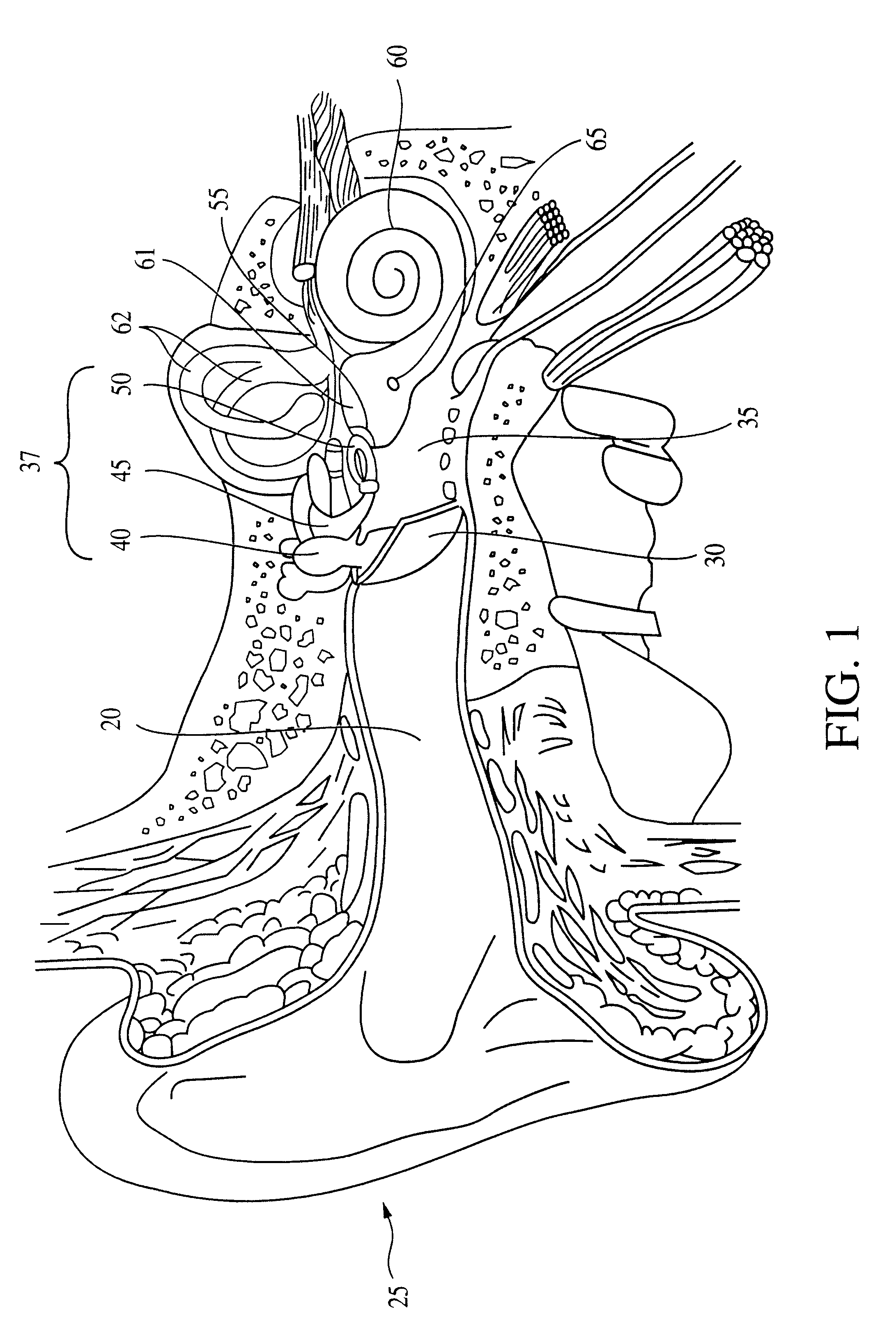Method and apparatus for a programmable implantable hearing aid
a hearing aid and implantable technology, applied in the field of implantable hearing aid technology, can solve the problems of small adjustments that could be made to these devices, frequent out-of-tune hearing aids, and high cost and time-consuming for continued fine tuning and real-time adjustment, so as to promote patient freedom of travel and reduce non-critical visits
- Summary
- Abstract
- Description
- Claims
- Application Information
AI Technical Summary
Benefits of technology
Problems solved by technology
Method used
Image
Examples
Embodiment Construction
FIG. 1 illustrates, generally, the use of the invention in a human auditory system. Sound waves are directed into an external auditory canal 20 by an outer ear (pinna) 25. The frequency characteristics of the sound waves are slightly modified by the resonant characteristics of the external auditory canal 20. These sound waves impinge upon the tympanic membrane (eardrum) 30, interposed at the terminus of the external auditory canal 20, between it and the tympanic cavity (middle ear) 35. Variations in the sound waves produce tympanic vibrations. The mechanical energy of the tympanic vibrations is communicated to the inner ear, comprising cochlea 60, vestibule 61, and semicircular canals 62, by a sequence of articulating bones located in the middle ear 35. This sequence of articulating bones is referred to generally as the ossicular chain 37. Thus, the tympanic membrane 30 and ossicular chain 37 transform acoustic energy in the external auditory canal 20 to mechanical energy at the coc...
PUM
 Login to View More
Login to View More Abstract
Description
Claims
Application Information
 Login to View More
Login to View More - R&D
- Intellectual Property
- Life Sciences
- Materials
- Tech Scout
- Unparalleled Data Quality
- Higher Quality Content
- 60% Fewer Hallucinations
Browse by: Latest US Patents, China's latest patents, Technical Efficacy Thesaurus, Application Domain, Technology Topic, Popular Technical Reports.
© 2025 PatSnap. All rights reserved.Legal|Privacy policy|Modern Slavery Act Transparency Statement|Sitemap|About US| Contact US: help@patsnap.com



